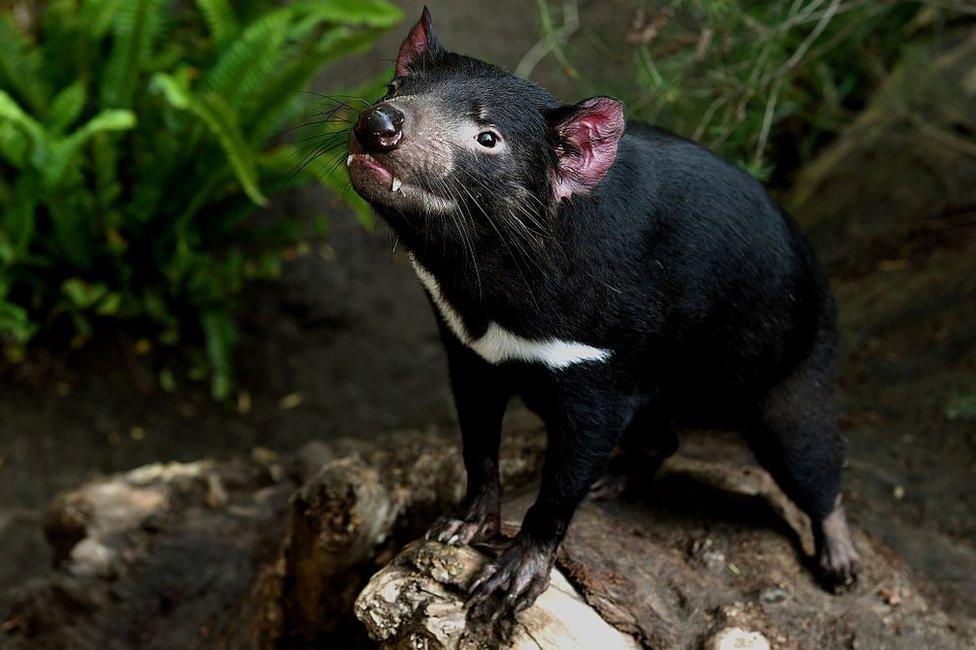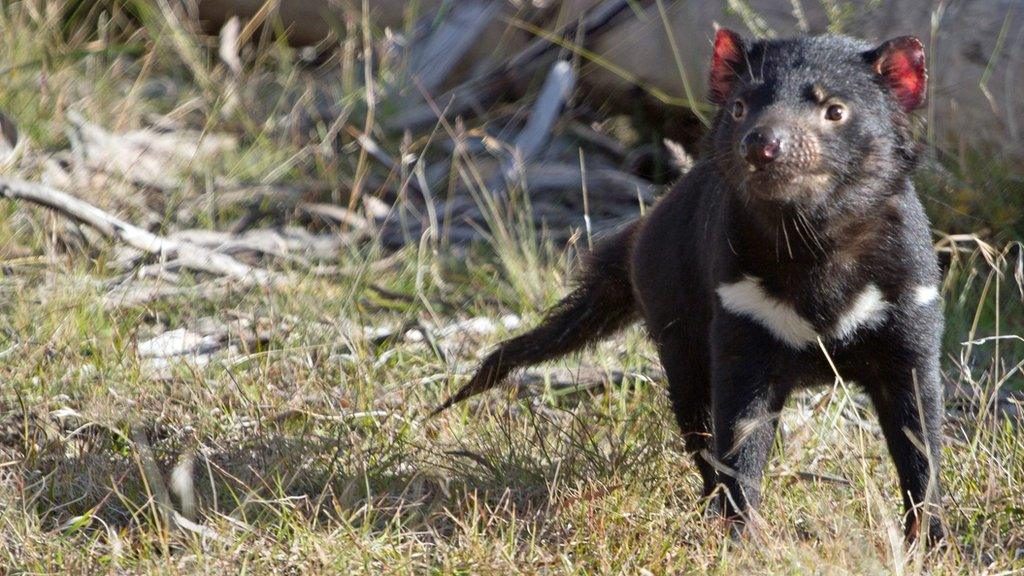Breakthrough offers hope for Tasmanian devil cancer cure
- Published

Cancer has torn through the Tasmanian devil population
Scientists have discovered a potential treatment for a cancer that has ravaged Australia's Tasmanian devil population.
The infectious facial cancer has wiped out 80% of wild devils since it was first identified in 1996.
By injecting live cancer cells, researchers have used immunotherapy for the first time to successfully treat the disease.
The breakthrough is hoped to fast-track development of an effective vaccine, said the international research team.
The treatment successfully eradicated tumours as big as golf balls, said co-author Prof Greg Woods of the University of Tasmania.
"When we saw those tumours get smaller it was so exciting," he said.
"This is almost a eureka moment for us because it's the first time we can say for sure that it was the immunotherapy that was making the tumour shrink."
Hope for cure
Devil facial tumour disease (DFTD), one of just three known transmissible cancers, typically kills nearly every devil it infects.
Researchers injected five captive animals with the immunotherapy treatment, likened to "fighting cancer with cancer", over a six-year period. Three of them survived.

Prof Greg Woods says it is a key step towards developing a vaccine
"This is an important step along the way to developing a vaccine to protect against DFTD and potentially for immunotherapy to cure devils of established DFTD," Prof Woods said.
Co-author Dr Bruce Lyons said the study offered the best hope yet for the carnivorous marsupial, which is unique to Tasmania.
However, it was not yet practical for treating the whole population.
"It's not feasible to track down and immunise every animal in the wild," Dr Lyons told the BBC.
The surviving devils from the study have since died of natural causes.
Population devastated
In the two decades since disease was first documented, the population of devils has dropped from 150,000 to approximately 30,000.
Essentially a single tumour that jumps between hosts, DFTD is transferred when the aggressive beasts bite each other's snouts.
Last year, a genetic study uncovered signs that the animals were rapidly evolving to defend themselves against DFTD.
The latest research, to be published in the journal Scientific Reports, also involved the University of Sydney, University of Southampton, University of Southern Denmark and University of Cambridge, as well as Australia's Walter and Eliza Hall Institute of Medical Research and biotechnology company CSL Ltd.
- Published30 August 2016

- Published21 November 2015
